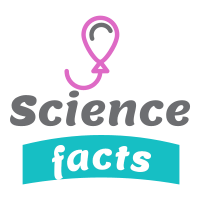Moon
A Moon is a large ball of rock that doesn't change shape-it just looks as though it does. The shape we seein the sky today depends onhow much of the Moon's face is lit up. Sometimes we observe a thin crescent, and at other times we see half or three quarter of the moon, and then a fully lit face-a full Moon.
The Moon is an astronomical body that orbits planet Earth and is Earth's only permanent natural satellite. It is the fifth-largestnatural satellite in the Solar System, and the largest among planetary satellites relative to the size of the planet that it orbits (its primary). The Moon is after Jupiter's satellite the second-densest satellite in the Solar System among those whose densities are known.
The Moon is an astronomical body that orbits planet Earth and is Earth's only permanent natural satellite. It is the fifth-largestnatural satellite in the Solar System, and the largest among planetary satellites relative to the size of the planet that it orbits (its primary). The Moon is after Jupiter's satellite the second-densest satellite in the Solar System among those whose densities are known.
The Moon is thought to have formed about 4.51 billion years ago, not long after Earth. The most widely accepted explanation is that the Moon formed from the debris left over after a giant impact between Earth and a Mars-sized body called Theia.
Moon Shapes
- New Moon
- Crescent
- First quarter
- Waxing gibbous
- Full Moon
- waning gibbous
- Last quarter
- Crescent
The view we have of the Moon changes according to the relative positions of the Sun, Earth, and Moon. Acomplete cycle of shapes, known as phases, takes 29.5 days.
Tell me more: how the Moon was formed
Most astronomer thinks that the Moon was formed out of Earth about 4.5 billion years ago. It is known as the gaint-impact theory.
02.Smashed asteroid pieces and material gouged out of Earth's rocky mantle from a ring around Earth.
03.Over several million years, the pieces of orbiting material bump into each other and join together.
04.They form one large body - the Moon. About a quarter the size of Earth, it slowly moves out to its present orbit.
WHAT'S IN A NAME?
A new mineral discovered on the lunar surface by the Apollo 11 crew in their honour. Armalcolite takes letters from their names: Armstrong, Aldrin, and collins.- There's so little gas in the Moon's atmosphere that the amount was doubled when the Apollo craft used its rocket motors to land on the surface.
- "Astronauts" footprints will stay visible for about a million years. They are slowly being worn away by dust particles, mainly from decaying comets that hit the Moon and produce tiny craters. This process is called "lunar gardening" as gradually the lunar soil is turned over.
Top eight places to visit on the Moon
01. Apollo 12 landing site
A short walk away from the spacecraft, surveyor 3.
02.Mare Orientale Crater
A huge crater surrounded by mountains.
03.Crater Linne
Changes in this area have lead it, at one time, to disappear from view.
04.Apollo 15 landing site
Hadley Rill, the first Lunar Rover, is still parked there.
05.Highland, Tycho Crater
The oldest part of the Moon-who knows what is buried deep below!
06.Apollo 11 landing site
Look out for Neil Armstrong's footprint, the first made of the Moon.
07.Lunar domes, Hortensius Crater
Volcano domes that in the distant past sent lava over the Moon's surface.
08.Mons Piton
A strange, isolated mountain, rising 2.3 km (1.4 miles).
Fast Facts
01: The pull of Earth's gravity keeps the Moon in orbit.
02: The moon's surface gravity is about one-sixth of Earth's.
03.The Moon's gravity pulls on Earth's oceans to produce tides.
04: The "far side" of the Moon we don't see was first imaged in 1959 by the Soviet spacecraft, Luna 3.
05:The moon reflects light like a very dirty mirror. Although the Full Moon looks bright. it is 400,000 times dimmer than the sun.
06: The Moon is 400 times smaller than the sun, but as it is 400 times closer they look same size.
07:The Moon's surface temperature changes every Moon- day from hotter than boiling water to colder than liquid air.
Blasts from the pasts
1546
John Heywood suggests the Moon is made of "green cheese". But not the colour green - by "green" he means fresh and un-matured.
1609
Englishman Thomas Harriot is the first to look at the moon through a telescope. A few months later Galileo sees lunar mountains, and he estimates their heights by the lenghth of the shadows they cast.
1969
On 20 july, Neil Armstrong is the first person to walk on the Moon. Buzz Aldrin (pictured below) follows 19 minutes later.





















.jpg)


